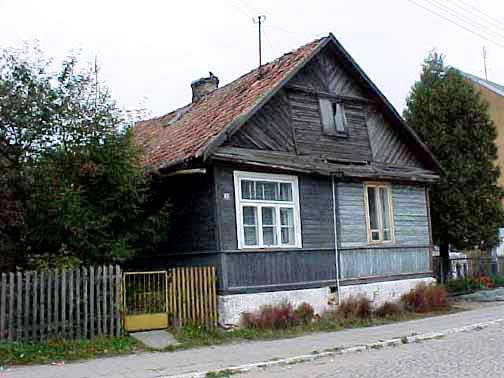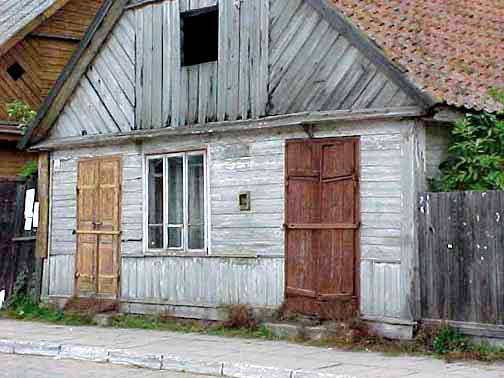Houses in Tykocin

The village of Tykocin is an example
of a Jewish shtetel, according to the tour guide on a trip which
I took to Poland in October 1998. The German name for the Shtetel
Jews was Dorfjuden, or village Jews in English. A few of these
villages had a population that was 100% Jewish, but in most of
them, the Jews lived side by side with the Polish Catholics.
The town of Tykocin was divided down the middle into the Jewish
district on the west side and the Christian district on the east
side.
 Courtyard entrance
to house with barn in background
Courtyard entrance
to house with barn in background
The photograph above was taken on the
main street in Tykocin. According to my tour guide, the entrance
to the house from a courtyard like this is typical of Jewish
homes in a shtetel. Note the old barn behind the house.
The shtetel way of life is now completely
gone in Poland; there are no more shtetel Jews. Martin Gilbert
gives a detailed description in his book "The Holocaust"
of how the Nazis rounded up the Jews in the shtetels and either
shot them or sent them to the extermination camps where they
were gassed. Of the 6 million Jews who died in the Holocaust,
approximately half were from Poland.
 Old house in village
of Tykocin
Old house in village
of Tykocin
The weathered gray wooden house shown
directly above appears to have shutters on the two doors which
are closed and barred. On the top of the house is a window which
looks like an opening into a hayloft. To prove that these buildings
are not barns, I took a picture of a barn in the back yard of
the house in the first photo above. When these houses were last
inhabited by shtetel Jews, most of them probably did not have
indoor plumbing.
According to historian Martin Gilbert,
there were whole villages in Poland, as late as 1945, that did
not have running water, indoor toilets or a sewer system. There
was no industry in Tykocin then and, according to my tour guide,
the inhabitants were engaged in farming, including the Jews.
|